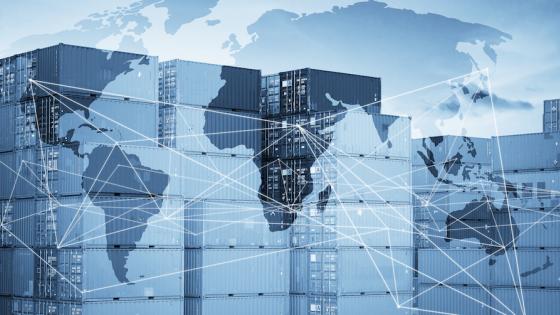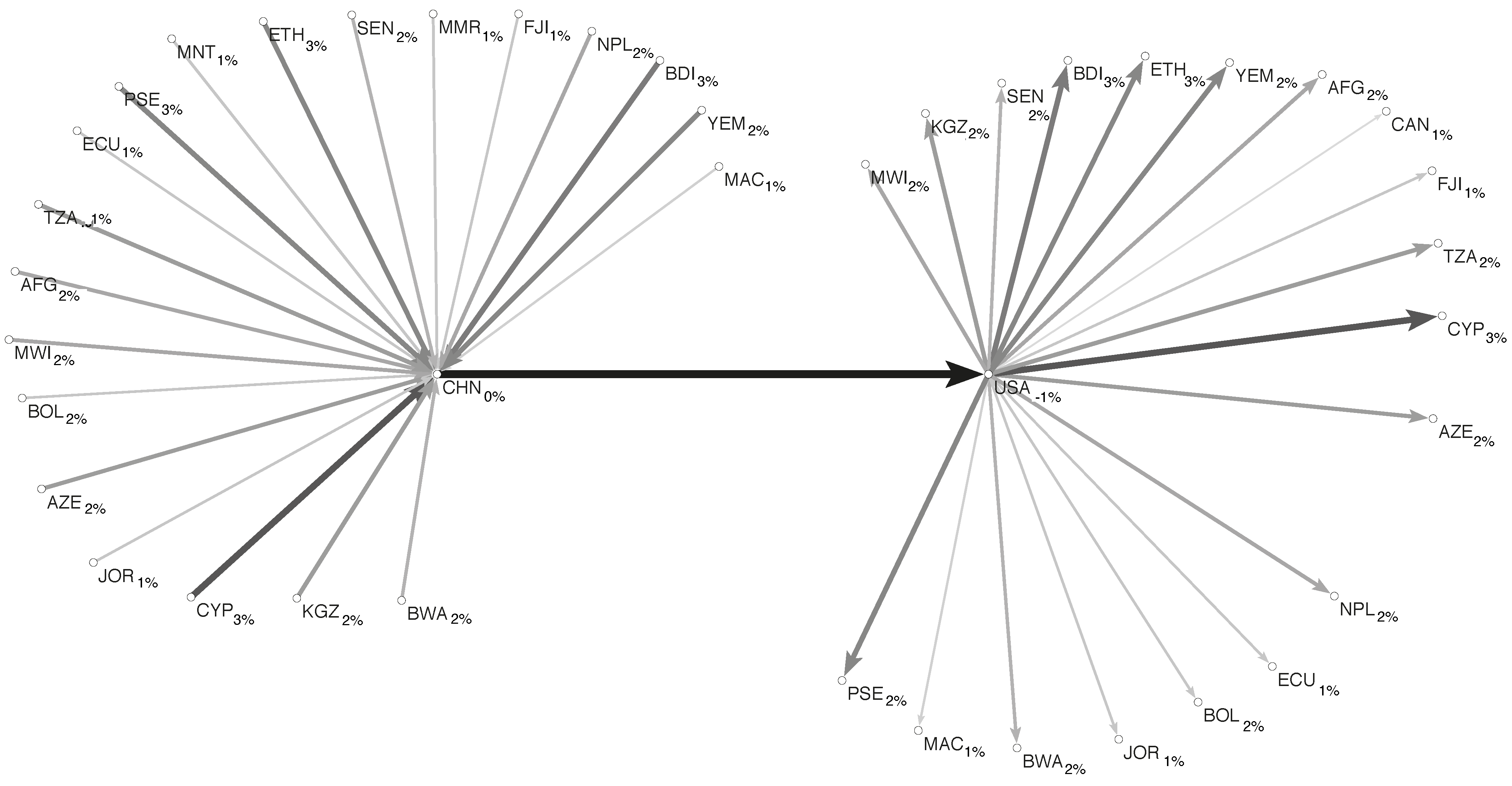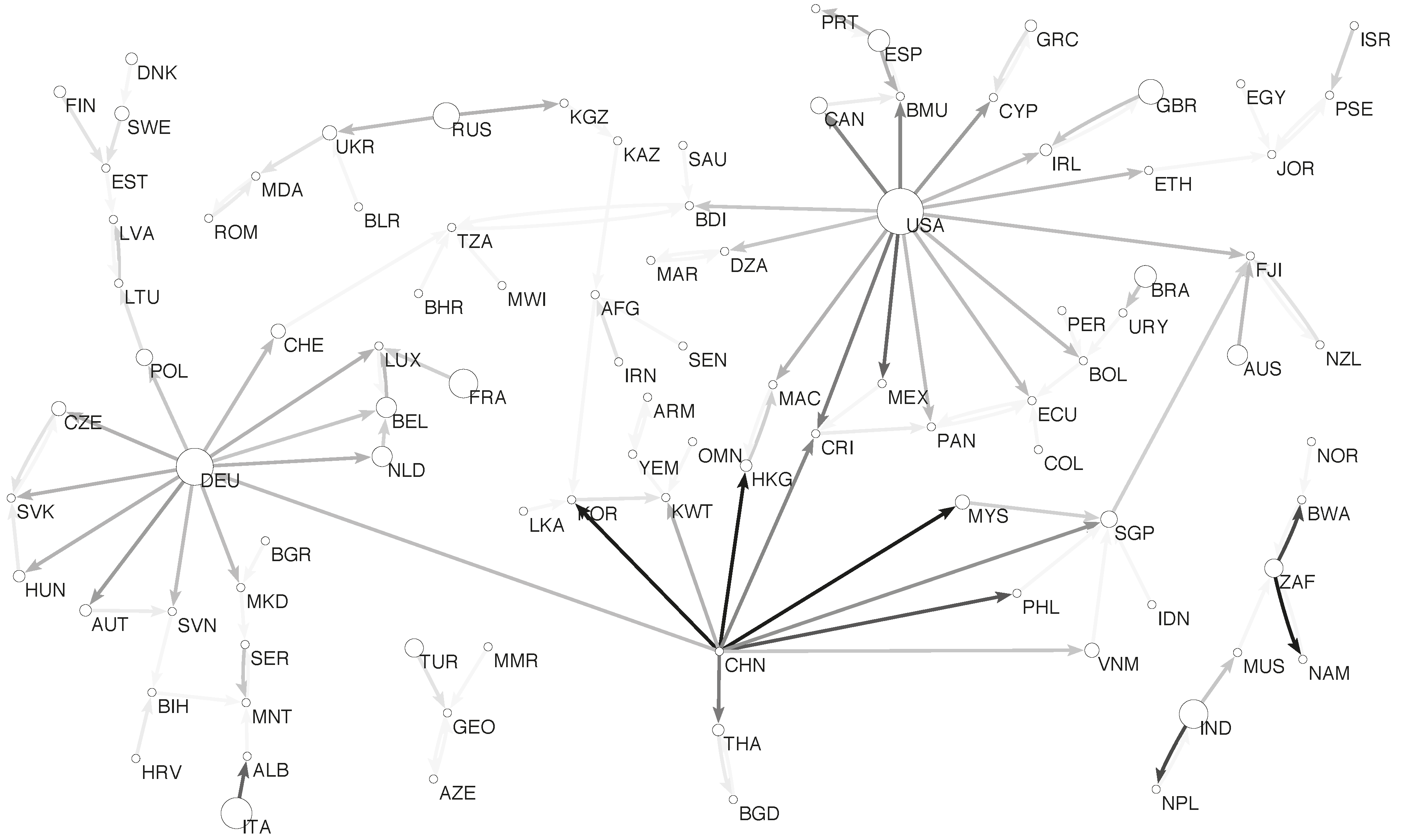Much has been written about the opportunities and threats arising from the international fragmentation of production processes (Baldwin 2018, Calì 2018, de Soyres et al. 2018). It may offer new development strategies (Baldwin, 2011), affect the way that business cycles co-move across countries (Johnson 2014), and spread the impact of natural disasters beyond the directly affected country (Boehm et al. 2015).
Yet, understanding the full implications of policy changes or natural shocks in today’s global value chains is much more complicated than in a world where only final products are traded. The reason is that these shocks spill over to all countries participating in a value chain through multiple conflicting channels.
For example, what the new rules-of-origin requirements in the recently signed US-Mexico-Canada trade agreement hold for workers in the German automotive industry is far from clear. On the one hand, German car parts and component producers such as Bosch may benefit from the improved competitiveness of German cars sold in the US and elsewhere, as the rules may drive up production costs in ‘Factory America’. On the other hand, Bosch has its own stake in the American car industry, as it supplies several of its components.
In this column, we report on a novel theoretical approach to track down the different, sometimes conflicting, ways in which shocks spread through global value chains. In a recent paper (Bosker and Westbrock 2018), we develop a comparative statics approach for general equilibrium trade models to decompose the total welfare effect of an arbitrary man-made or natural shock into several meaningful channels. We broadly identify three classes of channels:
- The local effects of a shock on the countries that are immediately affected. These come in the form of a goods supply effect, a factor demand effect, and an import competition effect for all the competitors of the immediately affected nations.
- The general equilibrium multipliers, which determine how the resulting changes in goods and factor prices in one country affect the goods and factor markets in all other nations.
- Finally, the supply chain diffusion channels that determine how the local effects of a shock propagate up- and downstream to all other nations that are part of the same supply chains as the immediately affected countries.
Although it was present in earlier general equilibrium trade models (e.g. Eaton and Kortum 2002, Caliendo and Parro 2015), the last channel has never received the attention that we think it deserves. It has a long tradition in the social and economic network literature, however, where network linkages play an important role in the diffusion of information (e.g. Banerjee et al. 2013) or the influence of peers (e.g. Bonacich 1987, Ballester et al. 2006).
In our paper we show, very generally, how the supply chain diffusion channel differs from the other two classic channels that were already present in earlier trade theories which did not distinguish between trade in intermediate and final products. In this column, we empirically illustrate the main implications. We take advantage of the fact that our approach can be easily taken to the data using no more than readily available data on ex-ante (i.e. prior to the shock) bilateral trade flows, total production and GDP, as well as estimates of the model’s main elasticity parameters.1
The externalities of local shocks
How are third countries affected by a regional trade agreement, a special tariff zone, or improved export procedures enacted in another part of the world? A long-standing result in economic theory suggests that their GDP and output will unambiguously fall, since third countries face more intense competition from the countries that are immediately affected by these measures.2
Things can be very different in a global production network. As a trade agreement expands the flow of goods along the affected trade routes, it increases the exporters’ demand for intermediate inputs from its own foreign input suppliers (the upstream supply chain diffusion channel). Also, as the agreement materialises in lower producer prices in the importer country, it improves the competitiveness of the importers’ supply chains and thus the incomes of all countries that are heavily engaged in these chains (the downstream diffusion channel).
The importance of these channels is illustrated in Figure 1. There, we show the most severely affected nations following a one-sided 10% tariff reduction on all the manufacturing products shipped from China to the US.
Maybe surprising, the predicted GDP gains for China (normalised to zero) as well as the predicted losses for the US (due to the more intense competition with Chinese imports) are both smaller than the GDP gains in no less than 65 other countries. In other words, the recently signed cease fire in the US-China trade war may be more welcoming news in Kabul or Addis Ababa than that it matters for Chinese or US workers.
Figure 1 Affected nations following a one-sided 10% tariff reduction on all manufacturing products from China to the US
Notes: The figure shows the 21 largest beneficiaries (out of a total of 65 beneficiaries in terms of a %-GDP increase) of a 10% tariff reduction on all Chinese exports into the US in the latest year in our data (2011). All predictions are relative to China's predicted GDP increase, which is normalised to zero. Arrows pointing towards China emanate from the group of 20 countries benefitting the most from the upstream supply chain diffusion channel; arrows pointing away from the US end up in the group of 20 buyers of US products that gain most in terms of the downstream diffusion channel.
The US-China case is in no way exceptional. Our predictions for all the other trade links in our data suggest that in case of roughly one quarter of them, a tariff reduction would increase GDP in at least one other country by more than in the immediately affected nations.
The gains from a global shock
Who is the major beneficiary of a global transport or ICT innovation that eases the trade with foreign suppliers? In the absence of international production linkages, the answer is no one. A global trade cost reduction would simply improve welfare in all countries to the same extent, as each country improves its access to foreign markets and technologies alike.
In today’s integrated production network, things are very different, as illustrated in Figure 2. The countries benefitting the most are typically located in the heart of Factory Asia, followed by Factory Europe. Their gains from an assumed 1% global trade cost reduction are about 1.5-2ppt larger than those of the least-benefiting countries in Central Asia, Africa, and South America.
Figure 2 Real income gains following a 1% global trade cost reduction in 2011
Notes: The figure shows each country's predicted real income gains following a 1% global trade cost reduction in 2011, which are plotted against each country’s downstreamness measure (Antràs and Chor, 2013).
The underlying intuition as to why countries are now differentially affected is the following: a global trade cost reduction improves all countries’ market access to their sales markets alike. However, in the presence of international production linkages, it is a country’s exposure to the trade costs reductions facilitating the flow of goods at every production stage that ultimately determines how its costs of production and consumption fall. This supply side effect is obviously in the advantage of countries that primarily operate on the downstream stages of the global production network.3 Not surprisingly, Figure 2 shows that the full predictions of our model can be well approximated by a simple network statistic, the ‘downstreamness’ measure of Antràs and Chor (2013) shown on the horizontal axis.
Key trading partners
But why are some countries better positioned in the global production network than others leading them, as we have seen, to reap larger welfare gains from trade? To answer this question, we turn to a country’s trading partners as they provide a country with access to suppliers located further upstream and buyers further downstream in the network.
For this purpose, Figure 3 depicts the output of a key player analysis, a useful trick applied in the network literature (Jackson 2017). It isolates one player (in our case, a country) from the network and identifies how this affects each remaining player’s wellbeing. To identify those trade partners that crucially determine a country’s network position, we only report those welfare losses that are due to the isolated country’s role as a trade intermediary of other nations’ value added and demand.
Figure 3 Key intermediaries in a trade network
Notes: The network picture isolates the ‘trade intermediation’ capacity of each of country in our 2011 dataset. Node sizes indicate the overall importance of a country as a trade intermediary for the remaining nations. Arrows indicate that either (a) country i contributes most to the welfare in country j, in terms of its intermediation capacity, or that (b) the country pair ij belongs in the top 50 of intermediation ties.
Figure 3 shows that much of the cross-country variation in network position can be traced back to a small group of, geographically near, key intermediaries. Countries located in Europe and East Asia clearly benefit from their strong ties with Germany and China, respectively, whereby France and Italy also play their part in Factory Europe. Beyond Factory Asia, China is not a very important ‘trade intermediary’, which can be attributed to the strong competition that these countries face from the foreign value-added content embodied in Chinese products.
The only exception to this pattern is Factory America, which lacks a similar web of strong intermediation ties. Even though the US is the most important trade intermediary for countries in the Americas, it is equally important to countries in other parts of the world.
Concluding remarks
Our key message is that in today’s globally integrated production network, a country's access to the technologies and markets of its direct trading partners is no longer sufficient for understanding the welfare consequences of trade policies or technological progress. What matters, instead, is a country's exposure to the changes in the larger production network. We have briefly introduced a novel approach to empirically quantify this type of network exposure.
References
Antràs, P and D Chor (2013), “Organizing the global value chain”, Econometrica 81(6): 2127-2204.
Baldwin, R (2011), “Trade and industrialisation after globalisation's 2nd unbundling: How building and joining a supply chain are different and why it matters”, NBER Working Paper w17716.
Baldwin, R (2018), “Trump can’t fix a 21st century problem with 20th century thinking”, VoxEU.org, 27 September.
Ballester, C, A Calvo-Armengol and Y Zenou (2006), “Who's Who in Networks. Wanted: The Key Player”, Econometrica 74(5): 1403-1417.
Banerjee, A, A G Chandrasekhar, E Duo, M O and Jackson (2013), “The diffusion of micro finance”, Science 341(6144): 1236498.
Boehm, C, A Flaaen and N Pandalai-Nayar (2015), "Input Linkages and the Transmission of Shocks: Firm-Level Evidence from the 2011 Tōhoku Earthquake", US Census Bureau Center for Economic Studies Paper No. CES-WP-15-28.
Bonacich, P (1987), “Power and centrality: A family of measures”, American Journal of Sociology 92: 1170-1182.
Bosker, M and B Westbrock (2018), “The network origins of the gains from trade”, CEPR Discussion Paper 13285.
Calì, M (2018), “The impact of the US-China trade war on East Asia”, VoxEU.org, 16 October.
Caliendo, L and F Parro (2015), “Estimates of the Trade and Welfare Effects of NAFTA”, The Review of Economic Studies 82(1): 1-44.
De Soyres, F, E Frohm, V Gunnella and E Pavlova (2018), “Global value chains and export elasticities: all linkages matter”, VoxEU.org, 9 October.
Eaton, J, and S Kortum (2002), “Technology, geography, and trade”, Econometrica 70(5): 1741-1779.
Jackson, M O (2017), “A typology of social capital and associated network measures”, mimeo.
Johnson, R C (2014), “Trade in intermediate inputs and business cycle comovement”, American Economic Journal: Macroeconomics 6(4): 39-83.
Endnotes
[1] All results shown here are obtained using 2011 data on bilateral trade, total production and GDP from CEPII, UN Comtrade, and the UN Industrial Statistics. The two crucial elasticity parameters are the trade elasticity and the elasticity of input substitution between each country’s domestic labour and foreign intermediate inputs.
[2] This long-standing result is the second Hicksian law of comparative statics.
[3] One crucial assumption, though, is that the larger price drops in downstream countries are in the advantage of its own people. This is not clear per se, not even in the model, as domestic producers might substitute foreign intermediate inputs for domestic labour. Nevertheless, this possibility can be excluded under the plausible assumption that the elasticity with which producers substitute between intermediate inputs and labour is smaller, in absolute terms, than the elasticity with which producers substitute between different intermediate input varieties (the ‘trade elasticity’ of intermediate inputs).





